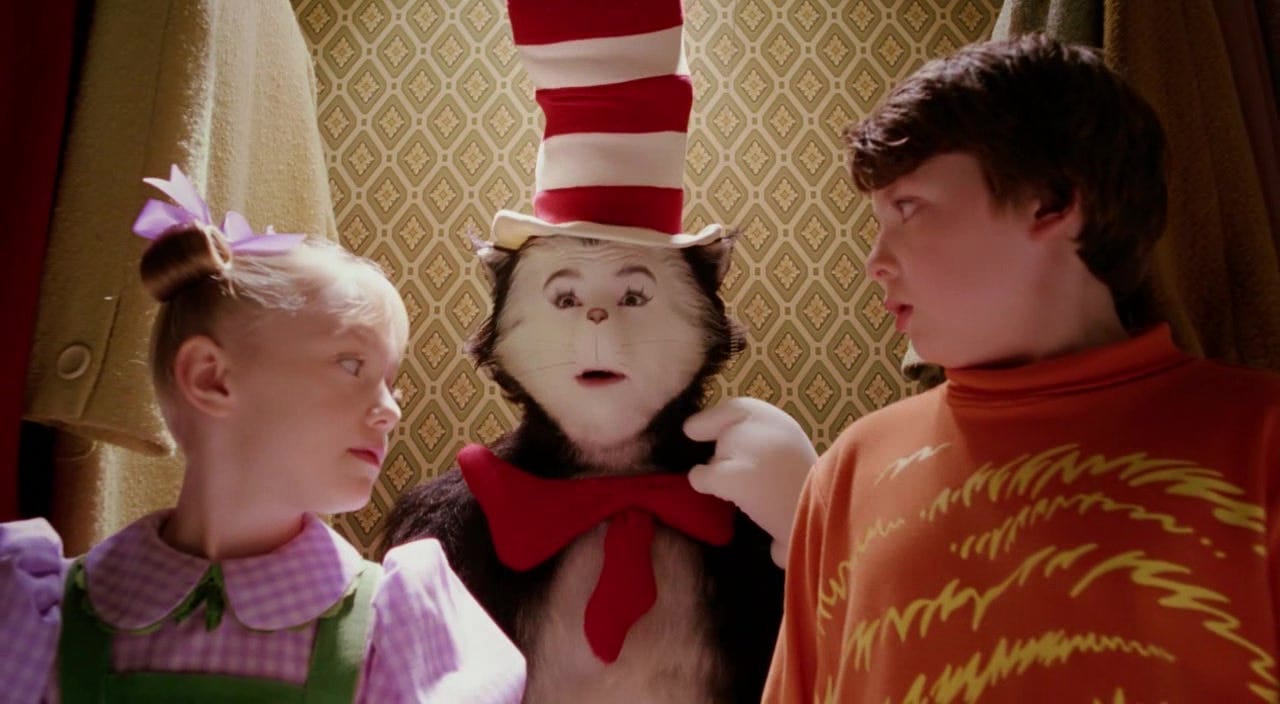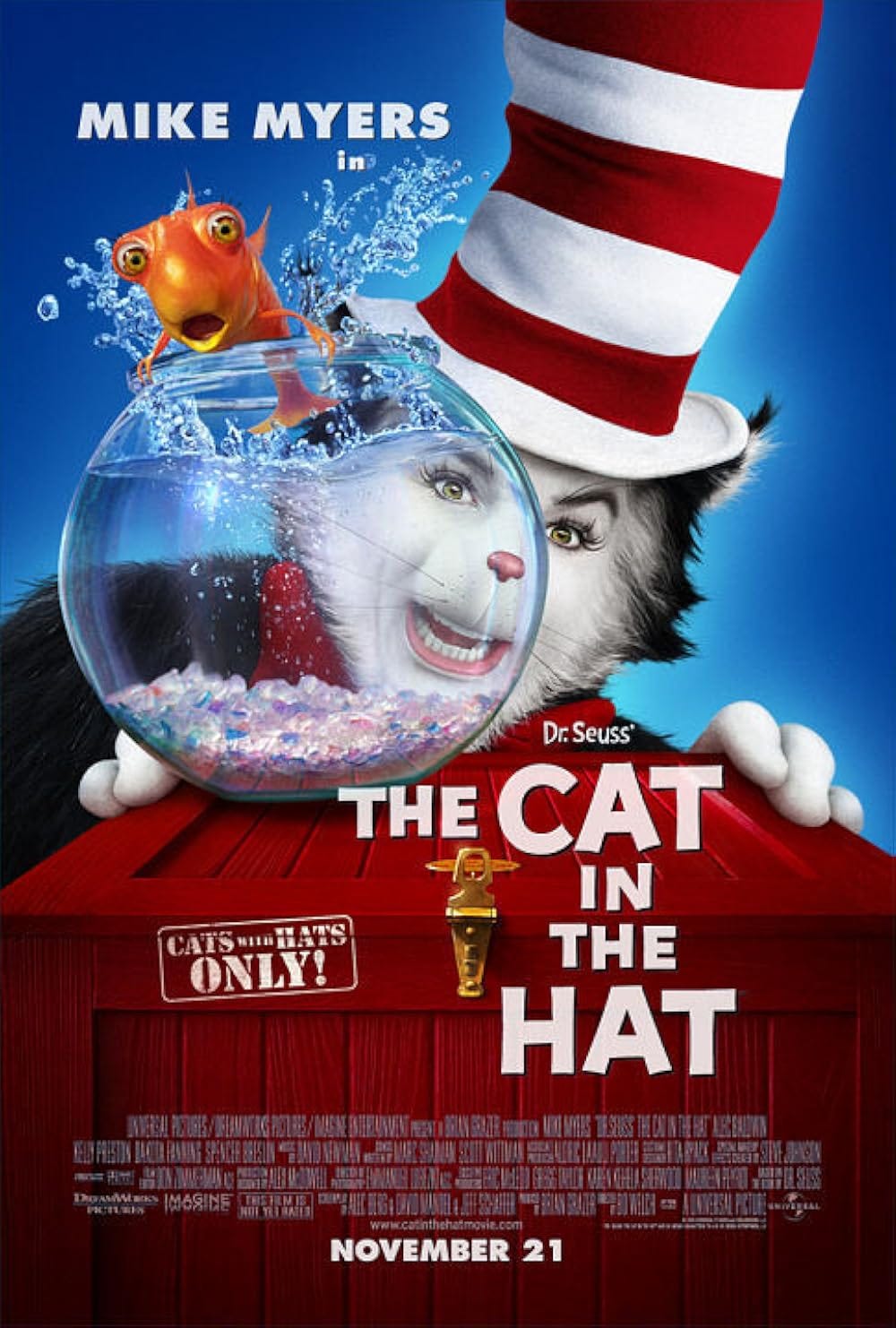Today’s issue of Dust On The VCR is a subscriber request! This…interesting choice was made by Audi Barnes, who has been my copywriting cohort at our day job for three and a half years now. She has the soul of a poet and the brain of someone wise well beyond her years, and she’s been a joy to work, laugh, and commiserate with from day one. You may also recognize her name from her excellent Dust On The VCR guest pieces on The Mummy and The Nightmare Before Christmas! It’s honestly about damn time I fulfilled Audi’s subscriber request after all her financial and linguistic support—even if she was trying to drive me insane with this assignment. Anyway. Want to request a film for a future issue? Subscribe to the paid version!
If you follow the ups and downs of the film industry like I try to do, you know that one fact remains relevant no matter the state of things: Hollywood loves to learn the wrong lesson.1
Take Barbie, for example. Most people, myself included, would agree that it’s a good movie. Some would even call it a great movie. It’s written and directed expertly by Greta Gerwig, performed memorably by Margot Robbie and Ryan Gosling and the supporting cast, and lovingly crafted by the costume, production design, and hair and makeup teams. It’s also based on a popular toy for children. And of course, it made almost $1.5 billion dollars.
And just like a grandmother or a great aunt who cooked too much food and continues to serve up portion after portion of the same thing no matter how full you are, Mattel decided that the big takeaway was that audiences want films based on every single toy they’ve ever created. Never mind that Barbie’s creative success has everything to do with the talented people who put their best effort into making it—it’s hard to argue that the main reason why it was a financial hit is the audience’s “pre-awareness” of the intellectual property. (After all, even bad movies make money all the time.)
Barbie, of course, was only the beginning for Mattel. They’re set to make an enormous cinematic investment in the near future. But maybe it’ll pay off. Maybe Vin Diesel’s Rock ‘Em Sock ‘Em Robots movie will make half a billion dollars. Maybe Daniel Kaluuya’s Barney movie will be a meta-textual masterwork.2 Maybe the dozen-plus projects the company has lined up over the next several years will continue to make them money hand over fist.
Or maybe it’ll go the way of the short-lived live-action Seuss-iverse of the early 00s. You know, the one that was buried by its second feature film, the head-scratching abomination that is The Cat in the Hat.
This film really puts the “cat” in “catastrophe,” folks. In hindsight, it’s pretty easy to see that it was doomed from the start. But it was also kinda inevitable. In 2000, Universal Pictures released a live-action rendition of How the Grinch Stole Christmas that doubled its budget in the U.S. and did decent business overseas too, bringing in nearly $350 million in total. In fact, it was a bit Barbie-esque on paper; they had a celebrated director in Ron Howard, the screenwriting duo that penned Who Framed Roger Rabbit, and Jim Carrey—who is never anything less than fully committed to his performances—in the titular role.3
Naturally, Universal learned the wrong lesson. They didn’t just assume that audiences were starving for more live-action Dr. Seuss adaptations. They convinced themselves that they could phone in the next project and see the same results. After all, it’s one of Dr. Seuss’ most beloved books. What could go wrong?
No disrespect to any of the people who made The Cat in the Hat, but the pedigree…just wasn’t on the same level as Grinch’s was. They hired a director who’d only helmed a handful of episodes for two short-lived TV shows. (Don’t worry, I’m going to compliment him later.) They paired him with a trio of writers who were also venturing into feature filmmaking for the first time. And while hiring Mike Myers was a good idea in theory—his popularity was skyrocketing after Shrek and two Austin Powers movies—he was strong-armed into the project by producer Brian Grazer after a legal settlement between the two.4 That might explain why Myers was allegedly an asshole to everyone on set.5
As you can imagine, many mistakes were made along the way. The script is filled with a surprising amount of adult humor, including two boner jokes and a gag about a gardening tool that I won’t be repeating. The meandering plot is about what you’d expect from a story based on a children’s book that contains only 236 unique words. And the music is rather forgettable, which is an even more egregious sin considering the fact that Grazer scrapped a suite of songs by the legendary Randy Newman before hiring his cousin David.6
It’s a huge mess, but it’s not without a few bright spots. While director Bo Welch was seemingly in over his head, you can tell that he came up in the film world as a production designer for auteurs like Tim Burton; when they’re not being muddled by poor CGI, the sets and costumes are actually quite nice.7 And while Myers’ performance is one of the most grating excuses for “comedy” that you’ll ever see, Kelly Preston and baby Dakota Fanning remain innocent. (It’s also worth mentioning that it’s a merciful 76 minutes if you don’t include the credits.)
But that didn’t matter much. Because Audrey Geisel, widow of Theodor “Dr. Seuss” Geisel, saw the film. And she hated it so much that she forbade any studio from producing a live-action adaptation of her late husband’s books as long as she was still alive.8
To make matters even worse, The Cat in the Hat wasn’t even a total flop. Even after Universal spent an absurd $109 million on the film, the box office haul eclipsed that mark by about $25 million with 75% of the sales coming from the U.S. That’s not exactly a success (or even a profit after factoring in marketing and distribution), but it’s not bad enough to learn the right lesson either. Which is why we find the film industry in the same position again and again.
Maybe there’s a silver lining though. After all, you and I don’t work for Universal Pictures, reader.9 We don’t have to worry about profit margins and production pipelines. If The Cat in the Hat had been competent but forgettable, it would’ve been far less interesting (to adults, at least), and it could’ve even ushered in more humanized Seuss-ifications. But the version that does exist is a fascinating failure, one worth relishing (perhaps while inebriated) and maybe even studying (also while inebriated). Or, if you’re a maniac like me, it might be worth writing more than 1,000 words about.
The Cat in the Hat is now streaming on Netflix, and it is available to rent elsewhere.
To clarify for topical reasons: I mean “Hollywood” as a totem of the American film industry at large, not the city of Los Angeles, which I love dearly and can’t wait to visit again. Hope any of you and your loved ones in that area are safe and sound.
I’m actually morbidly curious about this one. Kaluuya hasn’t had many high-profile misses in his career. But there’s a first time for everything.
I have not seen it, but I dated a woman years ago who explained to me that younger Millennials love this movie. In fact, she thought I was a huge weirdo for not having seen it. Alas, she broke up with me in mid-December before she could compel me to watch it. Her loss or mine? You tell me.
According to Wikipedia, Myers owed Grazer a favor after the former canceled a film adaptation of his popular Sprockets sketch on Saturday Night Live after he…was not pleased with his own screenplay. So Myers became legally obligated to star in The Cat in the Hat. (The Sprockets script couldn’t have been that bad.)
Myers’ co-star Amy Hill said that he made her experience on the film “horrible” and “nightmarish” because he refused to speak to anyone other than his assistants and the director. They also wound up shooting extra takes of several scenes whenever Myers wasn’t satisfied with them.
Speaking of the music, Smash Mouth continued their turn-of-the-century reign of terror by contributing two songs to this soundtrack, including a lifeless cover of the Beatles’ “Getting Better.”
Welch was the production designer on three of Burton’s best films: Beetlejuice, Edward Scissorhands, and Batman Returns. He also worked on The Lost Boys, The Color Purple, Men in Black, and Thor while earning four total Oscar nominations. That’s a pretty stellar career if you ignore his directing credits.
She died in 2018 at the age of 97. Maybe spite is the secret to a long and fulfilling life?
If anyone reading this actually does work for Universal Pictures, my DMs are open and I’ve got pitches for you. (Also, I’m sorry I said unkind things about one of your films.)




Another factor as to Hollywood not learning its lesson involved the tie-ins. Specifically, the US Post Office licensed tie-in posters and other promos, many of which were still in postal stations long after the movie was gone from theaters. (Another factor was DVD sales, or at least orders: this came out on DVD right when Target and WalMart were being pushed hard on massive orders that could not be returned or exchanged for credit, meaning both stores were stuck with huge piles of unsellable DVDs that they couldn’t hive away with free beer. (This was when Target had to start putting up notices at the Customer Service counter and in the DVD section that DVDs could only be exchanged, not refunded, only if something was wrong with the disc, and only in exchange for a replacement of the same movie. I heard from so many Target employees at the time that “The Cat In the Hat” was the main offender behind instituting the policy, where the overwhelming response to “Why did you want to return this DVD?” was “Because it fucking SUCKS!”)
Great piece, Jeremy.
I’m not too proud to admit that I’ve seen this movie more than once, sometimes willingly.
Even if one could argue (rightfully) that Myers’ Scottish shtick was already wearing thin in 2003, that scene of his dual act in the kitchen where the Cat chops off his tail had quite a bit of quote use/prominence in the house when I was growing up, if only by way of its sheer absurdity: my parents (fellow Canadians) have always had a soft spot for Myers, even if nobody was under any illusions about the quality of the movie overall - generally abysmal, even if, as you’ve highlighted, there is some solid if surface level artistic flourish.
But my God, it is still hilarious that anyone involved thought working in the amount of crude, adult humour they did - in a movie that was supposedly for kids/an all-ages audience - was a good idea. Just bad decision after bad decision.